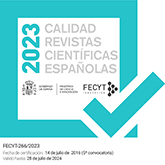Inventory of Hymenoptera (Hexapoda) from “El Ventorrillo”: a rich biodiversity spot in the Sierra de Guadarrama (central Spain)
DOI:
https://doi.org/10.3989/graellsia.2003.v59.i2-3.234Keywords:
inventory, Hymenoptera, sierra de Guadarrama, central Spain, biodiversity, malaise trapsAbstract
Overall data of the inventory of Hymenoptera from the Biogeological Station of “El Ventorrillo” are presented. The studied site is located at an altitude of 1450 m, on the south face of the Sierra de Guadarrama (Central Spain), about 60 km NW from Madrid. Between 1988 and 1991 an insect biodiversity inventory was carried out using three sampling methods: Malaise traps, yellow pan traps and sweep nets. Out of the more than 1,000,000 insects trapped, increasing the collections of the MNCN, about 600,000 were sorted to order. We found 83,688 individuals of Hymenoptera (representing 13,8% and the second more abundant group in the samples, after Diptera (450,000 individuals and 77,5% of total). Forty nine families, 518 genera and 1310 species de Hymenoptera has been identified until now. The overall richness of Hymenoptera from El Ventorrillo is estimated in 2700 species and about 13,000 the number of insect species from the study site. An appendix is provided with the list of identified species and its overall abundance in the samples. As results of the inventory, ten new species for science have been described, and several more new species are not yet described; additionally, at least 33 genera and more than 170 species were recorded for the first time for Iberia. The abundance of Hymenoptera, as measured by Malaise trap catches, was very high, comparatively to other published data, reaching a peak of 916 individuals per trap day at the most productive trap and sampling period. The more abundant families were, in decreasing order, Braconidae, Ichneumonidae, Mymaridae, Scelionidae, Apidae and Pteromalidae, represented by numbers of individuals between 12,000, for Braconidae, to near 6000 for Pteromalidae. Among the identified families, the more species rich at the study area were in decreasing order: Pteromalidae (290), Ichneumonidae (217), Sphecidae (107) and Eulophidae (101 species). The richness of the 29 remaining families at the area of study was estimated extrapolating overall regional richness data from Spain. The hymenopteran numbers from the inventory are compared with other local richness data from Spain and other surveys from Europe and America. The comparatively high abundance and richness figures at El Ventorrillo are emphasized. Results of the inventory, not yet completed, indicate a very high entomological diversity at the surveyed site, a small relatively well preserved area less than 0.5 km2, that probably is representative of other similar habitats in the Sierra of Guadarrama. This area is, however, under potential menace of alteration by the growing human and urban pressure of the vicinity of Madrid. We urge the politics and nature managers to protect this rich biodiversity spot. We hope that this work can help to support the recent proposal of creation of the National Park of the Sierra of Guadarrama.
Downloads
Download data is not yet available.
Downloads
Published
2003-12-30
How to Cite
1.
Nieves-Aldrey JL, Fontal-Cazalla F, Garrido-Torres AM, Rey del Castillo C. Inventory of Hymenoptera (Hexapoda) from “El Ventorrillo”: a rich biodiversity spot in the Sierra de Guadarrama (central Spain). Graellsia [Internet]. 2003Dec.30 [cited 2024Jul.22];59(2-3):25-43. Available from: https://graellsia.revistas.csic.es/index.php/graellsia/article/view/234
Issue
Section
Research Articles
License
Copyright (c) 2003 Consejo Superior de Investigaciones Científicas (CSIC)

This work is licensed under a Creative Commons Attribution 4.0 International License.
© CSIC. Manuscripts published in both the printed and online versions of this Journal are the property of Consejo Superior de Investigaciones Científicas, and quoting this source is a requirement for any partial or full reproduction.All contents of this electronic edition, except where otherwise noted, are distributed under a “Creative Commons Attribution 4.0 International” (CC BY 4.0) License. You may read here the basic information and the legal text of the license. The indication of the CC BY 4.0 License must be expressly stated in this way when necessary.
Self-archiving in repositories, personal webpages or similar, of any version other than the published by the Editor, is not allowed.













